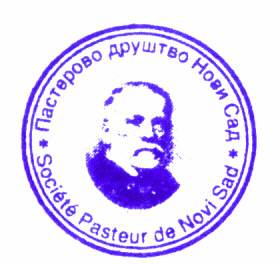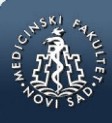md-medicaldata
Main menu:
- Naslovna/Home
- Arhiva/Archive
- Godina 2024, Broj 1
- Godina 2023, Broj 3
- Godina 2023, Broj 1-2
- Godina 2022, Broj 3
- Godina 2022, Broj 1-2
- Godina 2021, Broj 3-4
- Godina 2021, Broj 2
- Godina 2021, Broj 1
- Godina 2020, Broj 4
- Godina 2020, Broj 3
- Godina 2020, Broj 2
- Godina 2020, Broj 1
- Godina 2019, Broj 3
- Godina 2019, Broj 2
- Godina 2019, Broj 1
- Godina 2018, Broj 4
- Godina 2018, Broj 3
- Godina 2018, Broj 2
- Godina 2018, Broj 1
- Godina 2017, Broj 4
- Godina 2017, Broj 3
- Godina 2017, Broj 2
- Godina 2017, Broj 1
- Godina 2016, Broj 4
- Godina 2016, Broj 3
- Godina 2016, Broj 2
- Godina 2016, Broj 1
- Godina 2015, Broj 4
- Godina 2015, Broj 3
- Godina 2015, Broj 2
- Godina 2015, Broj 1
- Godina 2014, Broj 4
- Godina 2014, Broj 3
- Godina 2014, Broj 2
- Godina 2014, Broj 1
- Godina 2013, Broj 4
- Godina 2013, Broj 3
- Godina 2013, Broj 2
- Godina 2013, Broj 1
- Godina 2012, Broj 4
- Godina 2012, Broj 3
- Godina 2012, Broj 2
- Godina 2012, Broj 1
- Godina 2011, Broj 4
- Godina 2011, Broj 3
- Godina 2011, Broj 2
- Godina 2011, Broj 1
- Godina 2010, Broj 4
- Godina 2010, Broj 3
- Godina 2010, Broj 2
- Godina 2010, Broj 1
- Godina 2009, Broj 4
- Godina 2009, Broj 3
- Godina 2009, Broj 2
- Godina 2009, Broj 1
- Supplement
- Galerija/Gallery
- Dešavanja/Events
- Uputstva/Instructions
- Redakcija/Redaction
- Izdavač/Publisher
- Pretplata /Subscriptions
- Saradnja/Cooperation
- Vesti/News
- Kontakt/Contact
 Pasterovo društvo
Pasterovo društvo
- Disclosure of Potential Conflicts of Interest
- WorldMedical Association Declaration of Helsinki Ethical Principles for Medical Research Involving Human Subjects
- Committee on publication Ethics
CIP - Каталогизација у публикацији
Народна библиотека Србије, Београд
61
MD : Medical Data : medicinska revija = medical review / glavni i odgovorni urednik Dušan Lalošević. - Vol. 1, no. 1 (2009)- . - Zemun : Udruženje za kulturu povezivanja Most Art Jugoslavija ; Novi Sad : Pasterovo društvo, 2009- (Beograd : Scripta Internacional). - 30 cm
Dostupno i na: http://www.md-medicaldata.com. - Tri puta godišnje.
ISSN 1821-1585 = MD. Medical Data
COBISS.SR-ID 158558988
ASSESSMENT OF THE EFFECTIVENESS OF EARLY BREAST CANCER DETECTION IN THE MAČVA DISTRICT: A COMPARATIVE STUDY OF ORGANIZED AND OPPORTUNISTIC SCREENING MODELS
/
PROCENA EFIKASNOSTI RANOG OTKRIVANJA RAKA DOJKE U MAČVANSKOM OKRUGU: UPOREDNA STUDIJA ORGANIZOVANOG I OPORTUNISTIČKOG SKRINING MODELA
Authors
Nataša Čapo1,2, Jelena Đekić Malbaša1,3, Tihomir Dugandžija1,4, Željka Ninković5, Ljubica Nikolić Pajić1,6, Marijana Srećković1,5,6
1University of Novi Sad, Faculty of Medicine, Novi Sad, Serbia
2Pasteur Institute Novi Sad, Novi Sad, Serbia
3Institute for Pulmonary Diseases of Vojvodina, Sremska Kamenica,
4Oncology Institute of Vojvodina, Sremska Kamenica, Serbia
5Institute of Public Health of Sabac, Šabac, Serbia
6Academy of Professional Studies Šabac, Šabac, Serbia
UDK: 618.19-006.6-036.2(497.11)
The paper was received / Rad primljen: 20.02.2024.
Accepted / Rad prihvaćen: 13.04.2024.
Correspondence to:
Nataša Čapo
e-mail: hiniceva.ns@gmail.com
Abstract
Introduction: Breast cancer (BC) presents a considerable global health challenge with elevated mortality rates and an increasing incidence. Our study aims to assess the effectiveness of organized and opportunistic BC screening (BCS) in the Mačva District (MD) and compare the results and shortcomings of these two early detection models. Material and Methods: The research involves a retrospective analysis of age-standardized incidence (ASIRs) and mortality rates (ASMRs) of BC in the MD, as well as an evaluation of the effectiveness of health education and conducted BCS. Results: The ASIR of BC in Central Serbia (CS) (62.5±6.3) was significantly higher than in the MD (55.2±7.6), with p=0.02. The linear trend model showed a decrease in ASIR in both CS (0.1% annually) and the MD (0.5% annually). Although there was no significant difference in ASMR between CS and MD, both regions experienced a decline in ASMR. The coverage of organized BCS in Šabac and Loznica was 35%, with nine new cases of BC detected out of 215 cases in these cities combined. The ASIR in Loznica decreased (from 54.2/100,000 to 51.3/100,000), while it increased in Šabac (from 64.8/100,000 to 70.4/100,000). The ASIR for BC in Šabac was significantly higher than in the MD (p=0.001). Conclusion: The coverage of BCS was significantly lower than the required 75%, and a decrease in the ASIR for BC was observed in the MD. Coordination of all relevant institutions is needed to implement health education and preventive examinations and provide accessible healthcare to improve efficiency in the fight against BC.
Ključne reči:
breast neoplasms, global health, health education
Sažetak
Uvod: Rak dojke predstavlja ozbiljan globalni zdravstveni izazov sa visokom stopom smrtnosti i rastućom incidencijom. Naša studija ima za cilj proceniti efikasnost organizovanog i oportunog skrininga raka dojke u Mačvanskom okrugu i uporediti rezultate ova dva modela ranog otkrivanja karcinoma dojke. Materijal i metode: Istraživanje obuhvata retrospektivnu analizu standardizovanih stopa incidencije (SSI) i mortaliteta (SSM) raka dojke u Mačvanskom okrugu i u Centralnoj Srbiji u periodu 2006-2016. godina, kao i analizu sprovedenog skrininga u periodu 2015-2016. godina u Mačvanskom okrugu. Podaci su prikupljeni iz Zavoda za javno zdravlje, instituta, domova zdravlja, registara za rak i zvaničnih statističkih izvora. Rezultati: SSI raka dojke u Centralnoj Srbiji (62,5±6,3) su značajno više od onih u Mačvanskom okrugu (55,2±7,6), (p=0,02). Linearni model trenda pokazao je pad SSI u Centralnoj Srbiji i Mačvanskom okrugu (0,1% i 0,5 po godini, respektivno). Iako nije bilo značajne razlike u SSM između Centralne Srbije i Mačvanskog okruga, u obe regije je registrovan pad smrtnosti. Programom skrininga u Šapcu i Loznici obuhvaćeno je 35% od ukupnog broja žena uzrasta 50-69 godina. Od ukupnog broja registrovanih slučajeva raka dojke 4.2% (9/215) je detektovano skriningom. SSI u Loznici su se smanjile (od 54,2/100.000 do 51,3/100.000), dok su u Šapcu porasle (od 64,8/100.000 do 70,4/100.000). SSI za rak dojke u Šapcu su bile značajno više nego u Mačvanskom okrugu (p=0,001). Zaključak: Obuhvat žena u skrining programu bila je značajno niža od 75%. Zabeležen je pad SSI za rak dojke u Mačvanskom okrugu. Potrebna je koordinacija svih relevantnih institucija u sprovođenju edukacije, promocije preventivnih pregleda i obezbeđivanja pristupačne zdravstvene zaštite kako bi se poboljšala efikasnost u borbi protiv raka dojke.
Key words:
neoplazme dojke, globalno zdravlje, zdravstvena edukacija
References:
- Ferlay J, Ervik M, Lam F, Laversanne M, Colombet M, Mery L, Piñeros M, Znaor A, Soerjomataram I, Bray F (2024). Global Cancer Observatory: Cancer Today (version 1.1). Lyon, France: International Agency for Research on Cancer. Available from: https://gco.iarc.who.int/today, accessed [5. May 2024].
- Bray F, Laversanne M, Sung H, Ferlay J, Siegel RL, Soerjomataram I, Jemal A. Global cancer statistics 2022: GLOBOCAN estimates of incidence and mortality worldwide for 36 cancers in 185 countries. CA Cancer J Clin. 2024 May-Jun;74(3):229-263.
- Mikljuš D, Živković Perišić S, Božić Z. Malignant tumors in Republic of Serbia 2015. Belgrade: Institute of Public Health of Serbia; 2017. Available online: https://www.batut.org.rs/download/publikacije/Incidencija%20i%20mortalitet%20od%20raka%202015.pdf
- Zielonke N, Gini A, Jansen EEL, Anttila A, Segnan N, Ponti A, Veerus P, de Koning HJ, van Ravesteyn NT, Heijnsdijk EAM; EU-TOPIA consortium. Evidence for reducing cancer-specific mortality due to screening for breast cancer in Europe: A systematic review. Eur J Cancer. 2020;127:191-206.
- Dibden A, Offman J, Duffy SW, Gabe R. Worldwide Review and Meta-Analysis of Cohort Studies Measuring the Effect of Mammography Screening Programmes on Incidence-Based Breast Cancer Mortality. Cancers (Basel). 2020;15;12(4):976.
- Fancellu A, Sanna V, Sedda ML, Delrio D, Cottu P, Spanu A, Giuliani G, Conti M, Piras R, Crivelli P, Porcu A. Benefits of Organized Mammographic Screening Programs in Women Aged 50 to 69 years: A Surgical Perspective. Clin Breast Cancer. 2019;19(5):e637-e642.
- Majstorović N, Simić S, Matejić B, Cudanov M. [Assessment of required resources for implementation of national breast cancer screening program in Serbia]. Srp Arh Celok Lek. 2014;142(1-2):59-66.
- Uredba o Nacionalnom programu ranog otkrivanja karcinoma dojke. Službeni glasnik RS br. 73/2013 od 16.08.2013. godine.
- Kancelarija za skrining raka, Institut za javno zdravlje Srbije „Dr Milan Jovanović Batut” [Internet]. Dostupno na:http://www.skriningsrbija.rs/srl/skrining-raka-dojke/.
- Djordjevic S, Dimitrijevic I, Boricic K, Radovanovic S, Simic Vukomanovic I, Mihaljevic O, Jovanovic S, Randjelovic N, Lackovic A, Knezevic S, Stankovic V, Sorak M, Jovanovic V. Sociodemographic Factors Associated with Breast Cancer Screening Among Women in Serbia, National Health Survey. Iran J Public Health. 2024;53(2):387-396.
- Milovic M, Tamas T, Crnobrnja V, et al. Economic burden of breast cancer in northern Serbia. Front Public Health. 2023;15;11:1265301.
- Segi M (1960). Cancer mortality for selected sites in 24 countries (1950–57). Sendai, Japan: Department of Public Health, Tohoku University of Medicine.
- Doll R, Payne P, Waterhouse JAH, editors (1966). Cancer incidence in five continents, Vol. I. Geneva: Union Internationale Contre le Cancer.
- Republički zavod za statistiku, Republika Srbija, popis stanovništva 2011. godine. Preuzeto sa: http://www.stat.gov.rs/sr-latn/oblasti/popis/popis-2011/popisni-podaci-eksel-tabele/
- Moon HJ, Kim MJ, Kwak JY, Kim EK. Probably benign breast lesions on ultrasonography: a retrospective review of ultrasonographic features and clinical factors affecting the BI-RADS categorization. Acta Radiol. 2010;51(4):375-82.
- Independent UK Panel on Breast Cancer Screening. The benefits and harms of breast cancer screening: an independent review. Lancet. 2012;380(9855):1778-86.
- Altobelli E, Lattanzi A. Breast cancer in European Union: an update of screening programmes as of March 2014 (review). Int J Oncol. 2014;45(5):1785-92.
- Jovićević A. Ispitivanje faktora koji utiču na znanje, stavove i ponašanje žena u odnosu na rano otkrivanje raka dojke. [doktorska disertacija]. Univerzitet u Beodradu, Medicinski fakultet, 2018. Dostupno na: https://nardus.mpn.gov.rs/handle/123456789/10713
- O’Driscoll D, Warren R, MacKay J, Britton P, Day NE. Screening with breast ultrasound in a population at moderate risk due to family history. J Med Screen. 2001;8(2):106-9.
- Giudici F, Bortul M, Clagnan E, et al. Effetti precoci dell’adesione al programma di screening mammografico della Regione Friuli Venezia Giulia sull’incidenza del cancro della mammella in stadio avanzato: uno studio di coorte [Early effects of attendance to the Friuli Venezia Giulia (Northern Italy) mammography screening programme on the incidence of advanced-stage breast cancer: a cohort study]. Epidemiol Prev. 2020;44(2-3):145-153.
PDF: 01-Čapo N. et al. MD-Medical Data 2024;16(2) 079-085.pdf
 Medicinski fakultet
Medicinski fakultet